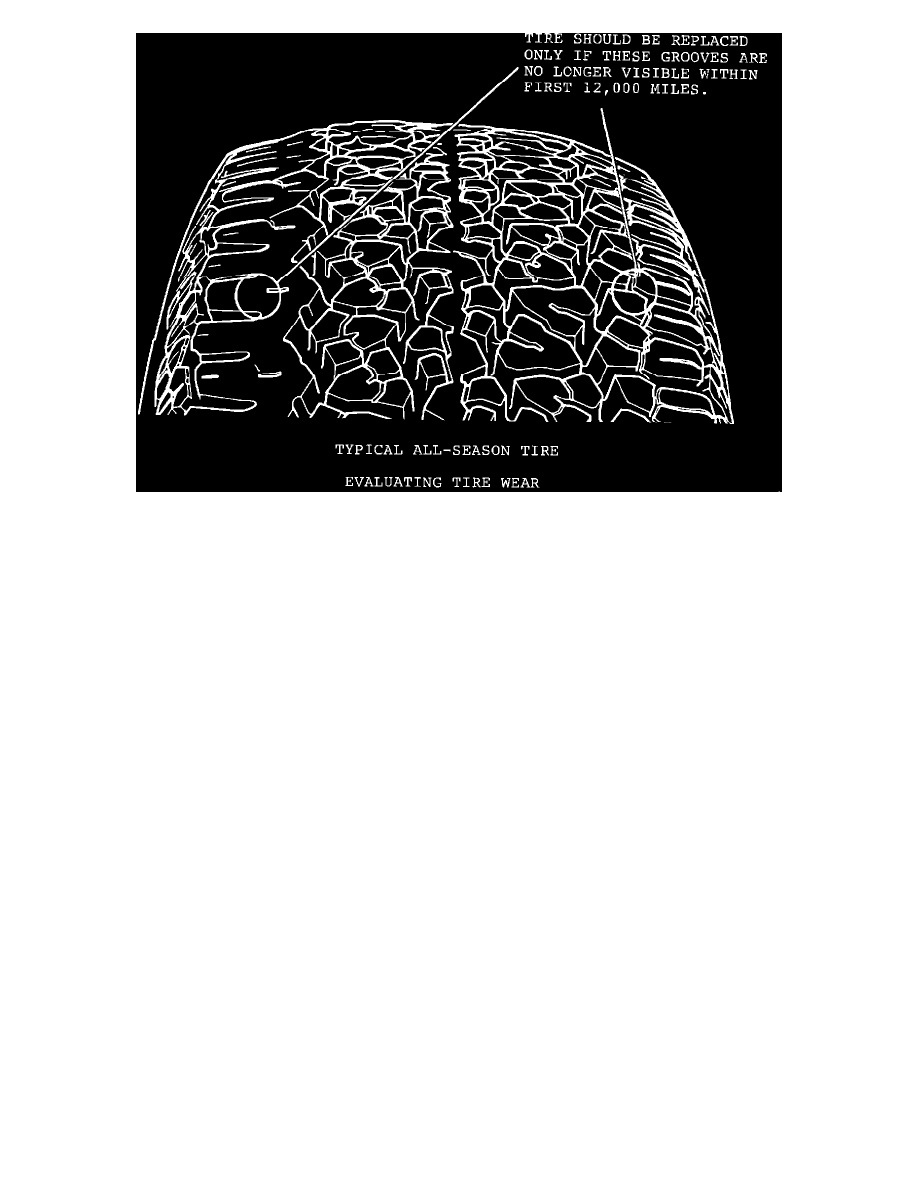Bonneville V6-231 3.8L VIN 3 SFI (1988)

FIGURE 2
Irregular/premature tire wear is aggravated by excessive toe-in (or toe-out). Excessive camber can also be a contributor, as can operating conditions,
such as city driving with a lot of cornering. Irregular tire wear usually occurs on non-drive axles, such as the front wheel positions of rear drive vehicles.
An early indication may be an increase in tire noise. In most cases, modified "X" tire rotation, which is a scheduled maintenance at 7,500 miles, will
equalize tire wear (see Figure 1). Some amount of wear is expected and should be considered normal. Only when the cross grooves in the tread
disappear within 12,000 miles should the tires be replaced under warranty (see Figure 2). Even when these grooves disappear, however, the tire is
normally only half worn in this area. Whenever tires are replace for this reason, alignment should be checked and reset to specification, if necessary.
If tires are needed for any of the previous conditions, they should be purchased from your local tire outlet. If tires are not readily available, each tire
manufacturer has a toll-free assistance line for dealers. These numbers have been previously provided. The tire invoice amount should be entered as a
net item on the warranty claim with the appropriate labor operation to replace wheel and/or tire.
This rotation pattern eventually gets each tire on all four positions.
It gets those tires on the non-drive axle, which are most prone to irregular wear, to turn in the opposite direction. This will equalize wear quickest and tire
noise related to tread wear will actually become quieter after a few thousand miles.
